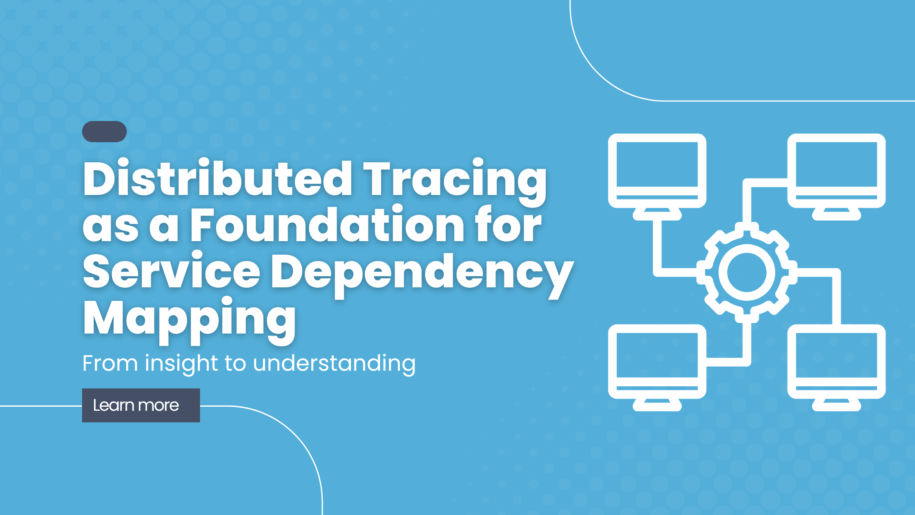The Map Is Not The Territory
I’ve spent countless hours staring at outdated architecture diagrams before the ink dried. We’ve all been there – trying to understand how our services interact, only to discover that reality has long since diverged from our carefully crafted documentation. It’s a universal challenge in our world of microservices, and it’s time we talked about a better way forward.
Beyond The Debugging Tool
Then came distributed tracing. At first glance, it might seem like just another debugging tool you reach for when things go wrong. But I’ve seen it as something far more powerful: the foundation for truly understanding how our systems behave in the wild—not how we think they work or how we designed them to work, but how they actually work.
A City Without A Map
Think about how we traditionally map service dependencies. We draw diagrams in various tools, maintain configuration files, and rely on tribal knowledge passed down through teams. It’s a bit like trying to map a city by looking at its original blueprints – useful, but woefully inadequate for understanding how people actually move through the streets today.
Living, Breathing Data
Distributed tracing, on the other hand, is like having a live satellite view of your city, complete with real-time traffic patterns. It shows you not just the roads, but how people actually use them. In our systems, it reveals the hidden pathways, the unexpected dependencies, and the surprising ways our services interact.
From Insight to Understanding
What really excites me is that it’s not just about seeing these connections – it’s about understanding them. When you build service dependency mapping on top of distributed tracing, you’re working with ground truth. Every connection you see represents real requests, real user journeys, real business value being delivered.
Real World Impact
The implications of this are profound. Imagine being able to answer questions like “What would break if we updated this service?” not by consulting documentation or asking around, but by looking at actual data. Imagine being able to spot emerging patterns in your architecture before they become problems. Imagine having conversations about system design based on reality rather than assumptions.

Facing the Challenges
Let’s be honest, though—it’s not all sunshine and rainbows. Implementing comprehensive distributed tracing comes with its challenges. There’s the question of overhead, the challenge of managing data volume, and the complexity of instrumentation. But I’d argue that these challenges are worth tackling because the alternative—flying blind in an increasingly complex distributed system—is far more costly.
Transforming Team Dynamics
What’s particularly fascinating is how this approach changes the way teams collaborate. Conversations change when you have a shared understanding of service dependencies based on real data. Architecture discussions become more grounded. Incident response becomes more focused. Planning becomes more realistic.
The Evolution of Architecture
I’ve seen teams transform their approach to system evolution once they have this foundation in place. Instead of making changes and hoping for the best, they can simulate the impact. Rather than discovering dependencies during outages, they can proactively manage them. The shift from reactive to proactive architecture management is remarkable.
The Future Is Intelligent
Looking ahead, I see this becoming even more powerful as we add machine learning into the mix. Imagine systems that can predict problematic dependency patterns before they emerge or automatically suggest architectural improvements based on actual usage patterns. The foundation we lay today with distributed tracing will enable these capabilities tomorrow.

Embracing Complexity
Perhaps the most exciting aspect is how this changes our relationship with system complexity. Instead of fighting against the dynamic nature of modern distributed systems, we embrace it. We accept that our systems will evolve unexpectedly, and we build tools that help us understand and manage that evolution.
A New Way of Thinking
This isn’t just about having better tools – it’s about changing how we think about system architecture. It’s about moving from static, point-in-time understanding to dynamic, evolving knowledge. It’s about building systems that we can understand and evolve with confidence.
The Path Forward
The next time you update an architecture diagram or try to understand how a change might impact your system, consider this: what if you didn’t have to guess? What if you could know, with certainty, how your services depend on each other? That’s the promise of building service dependency mapping on distributed tracing – and it’s a future I’m excited to help build.

Conclusion - Not just Useful but Essential
As our systems continue to grow in complexity, this approach becomes not just useful but essential. It’s time to move beyond static documentation and embrace tools that help us understand our systems as they actually are, not just as we imagine them to be. Distributed tracing isn’t just a debugging tool – it’s the foundation for the next generation of system understanding and evolution.










